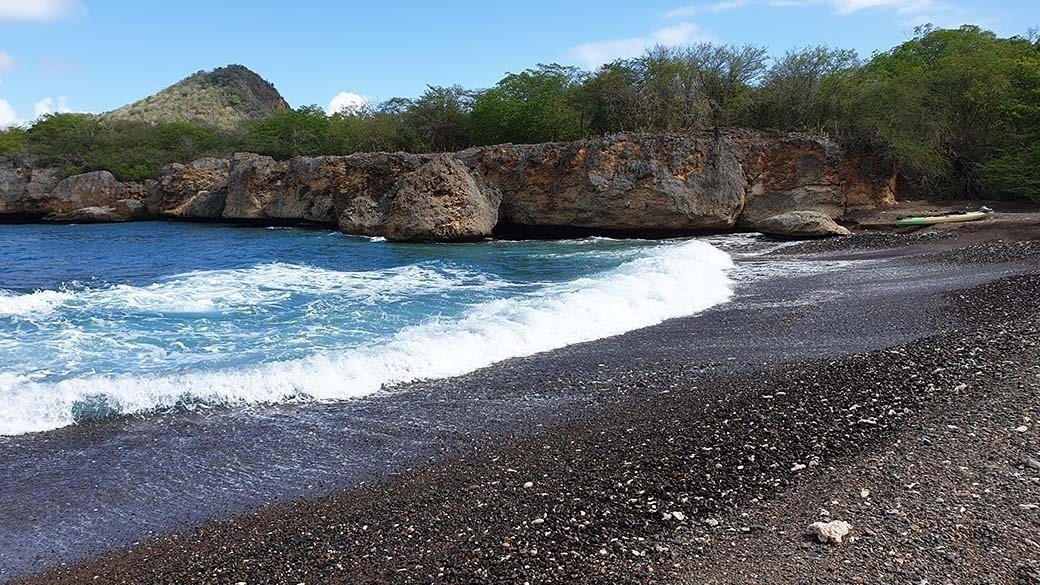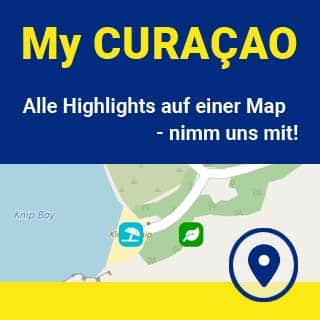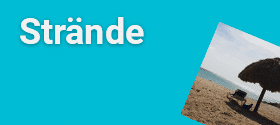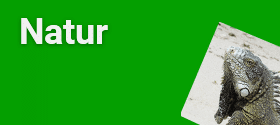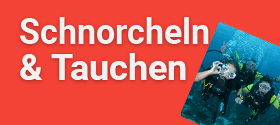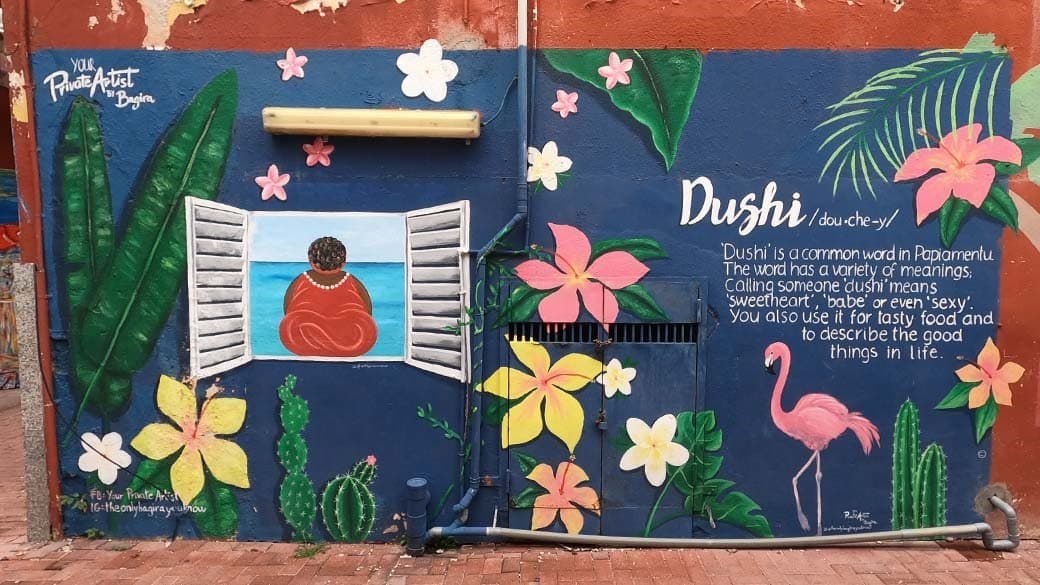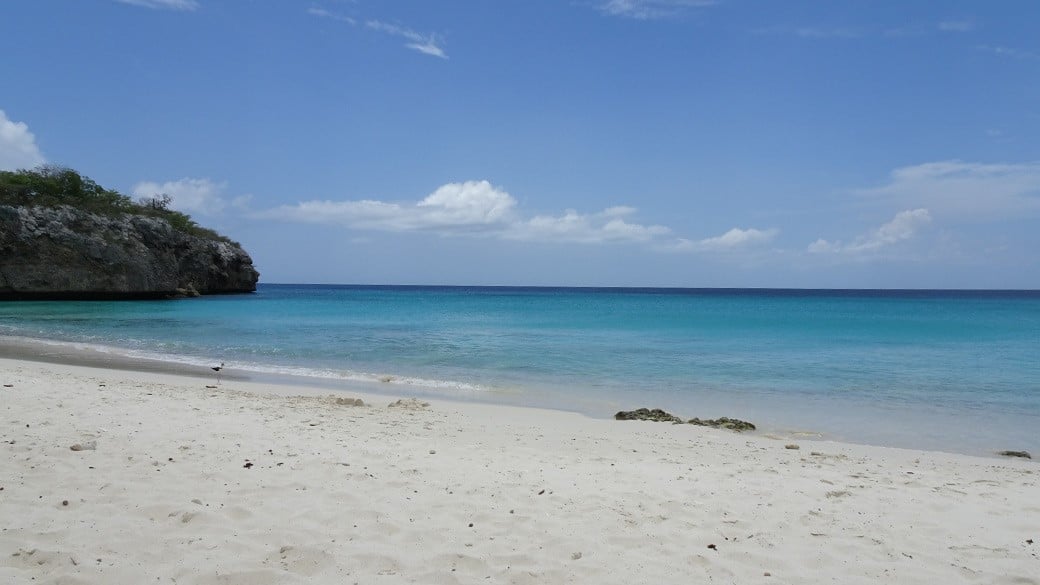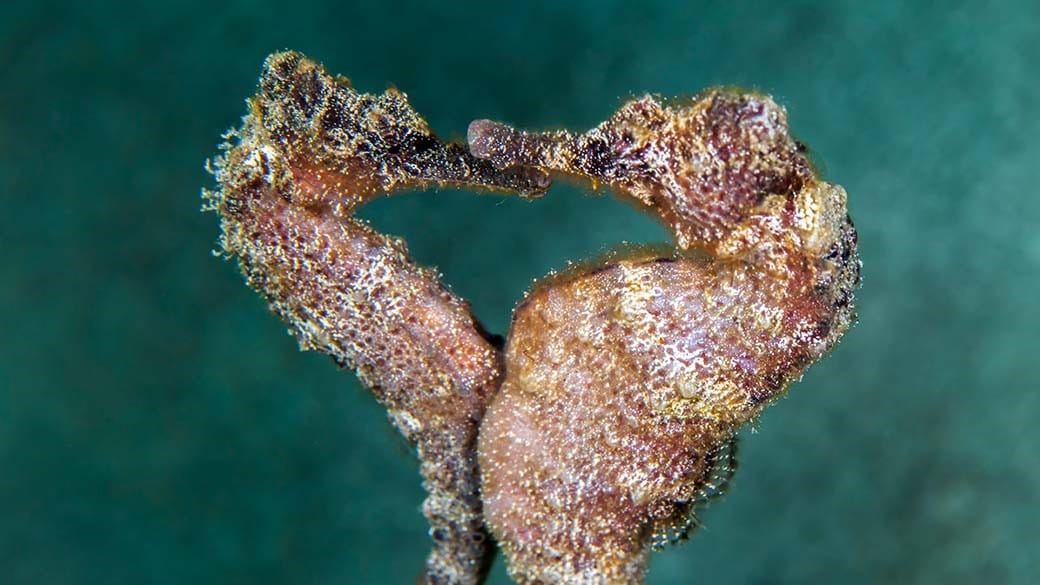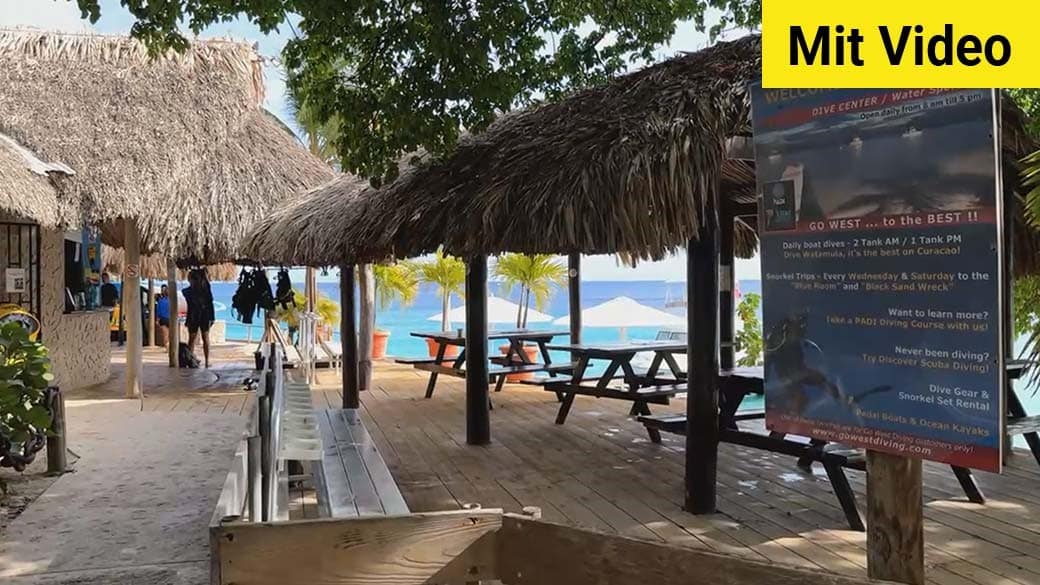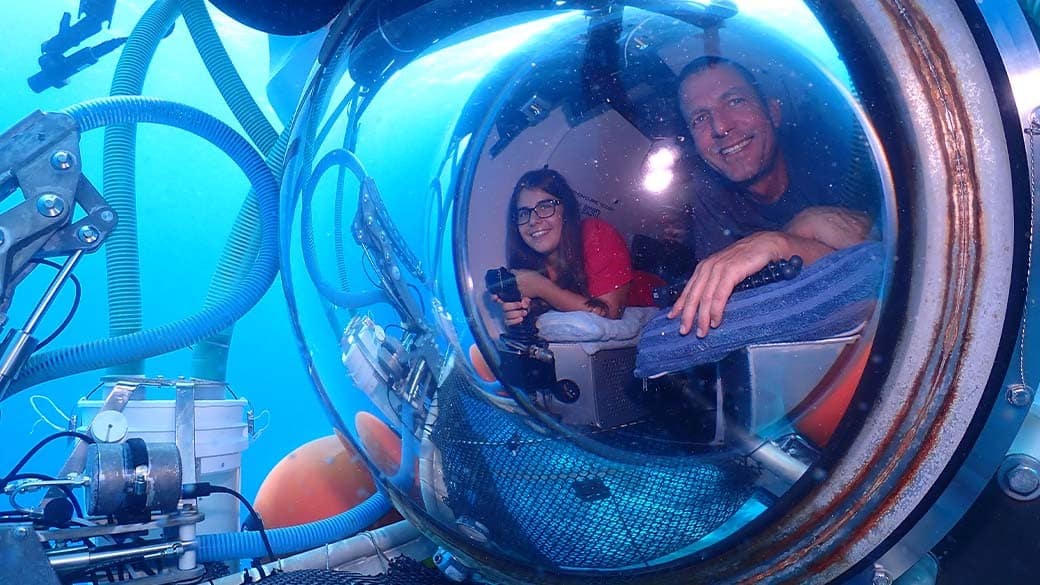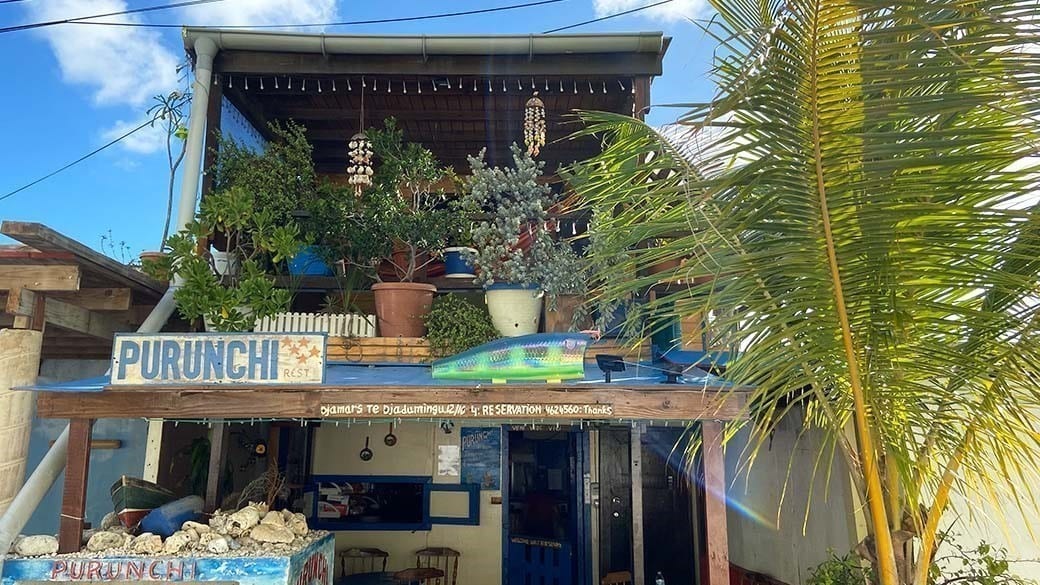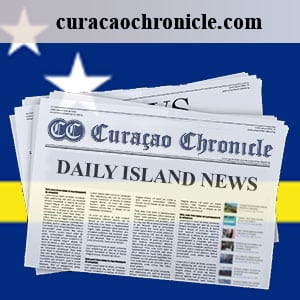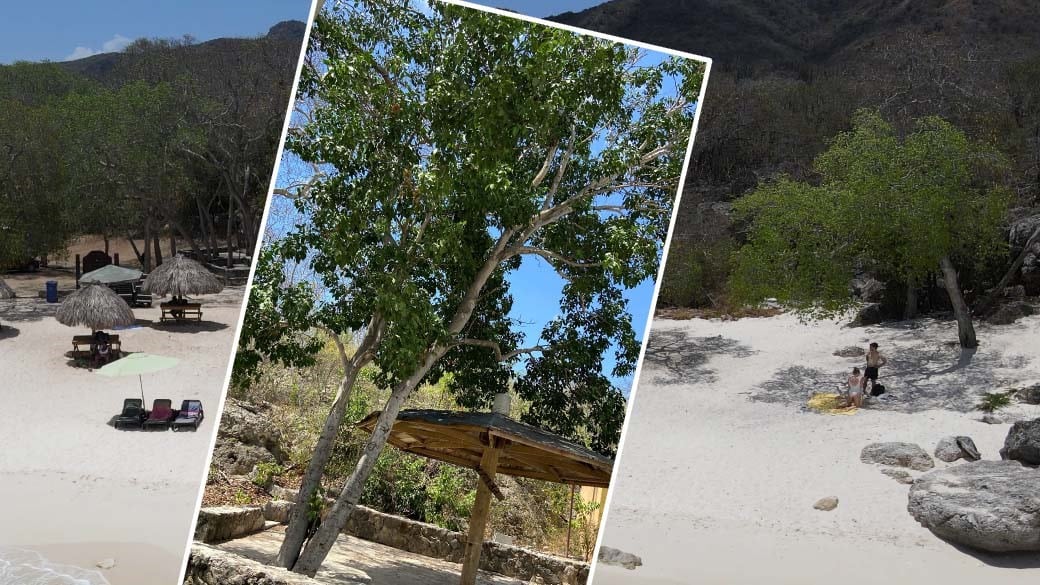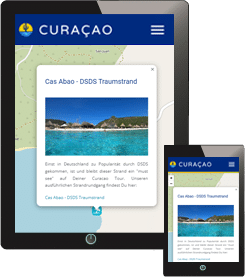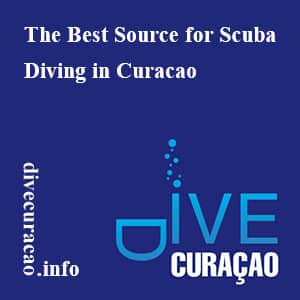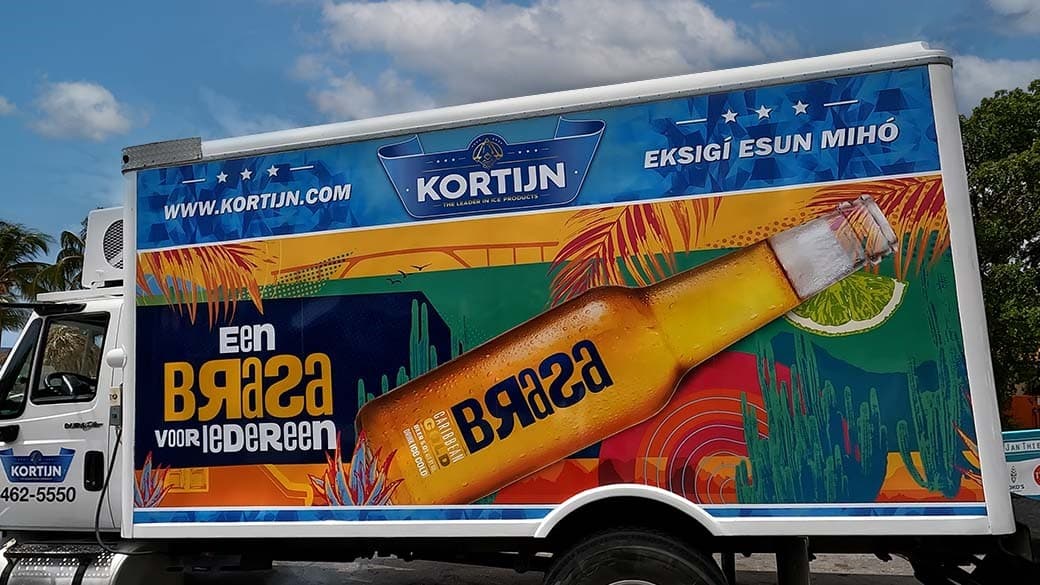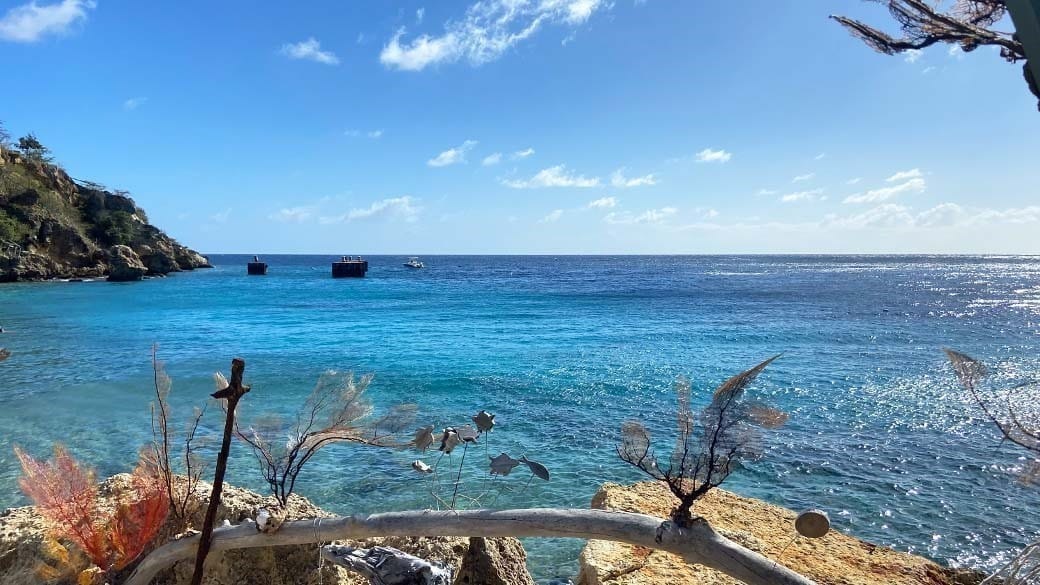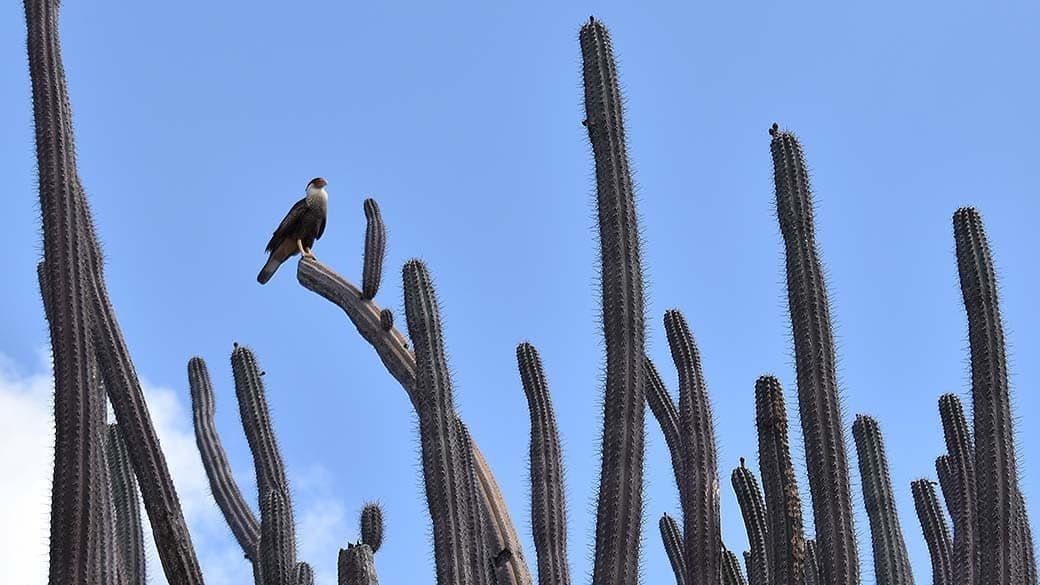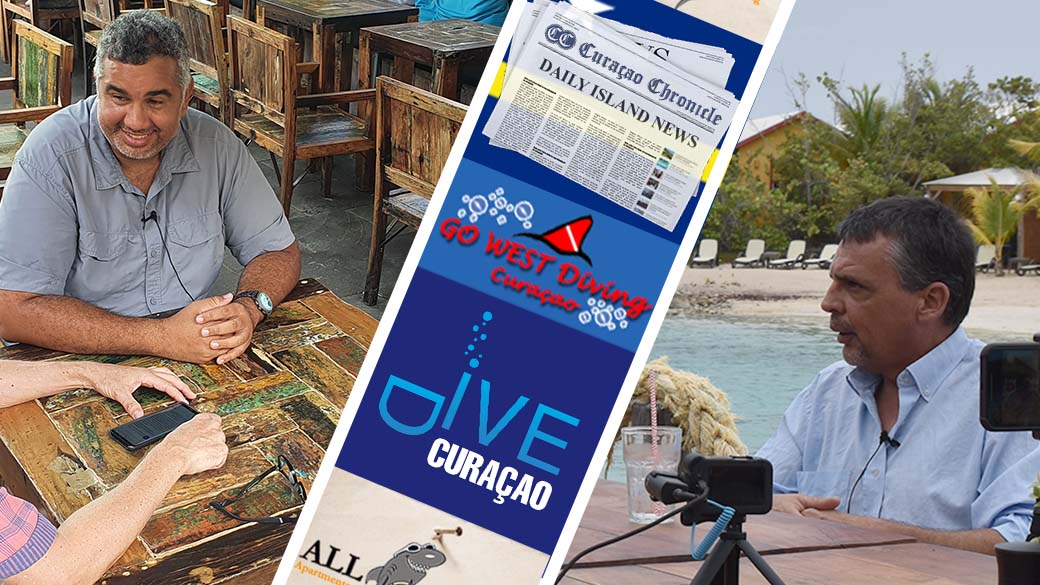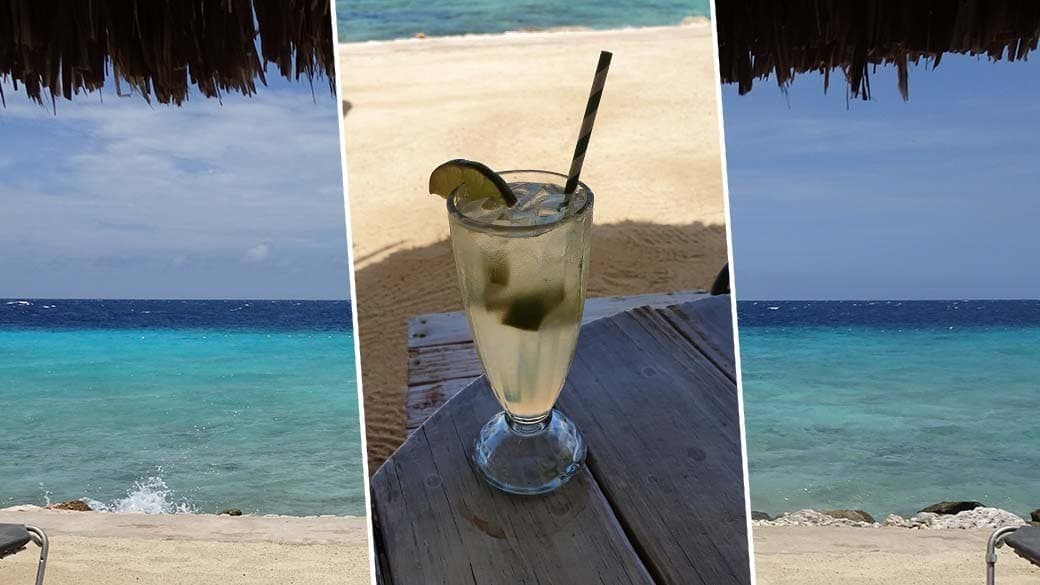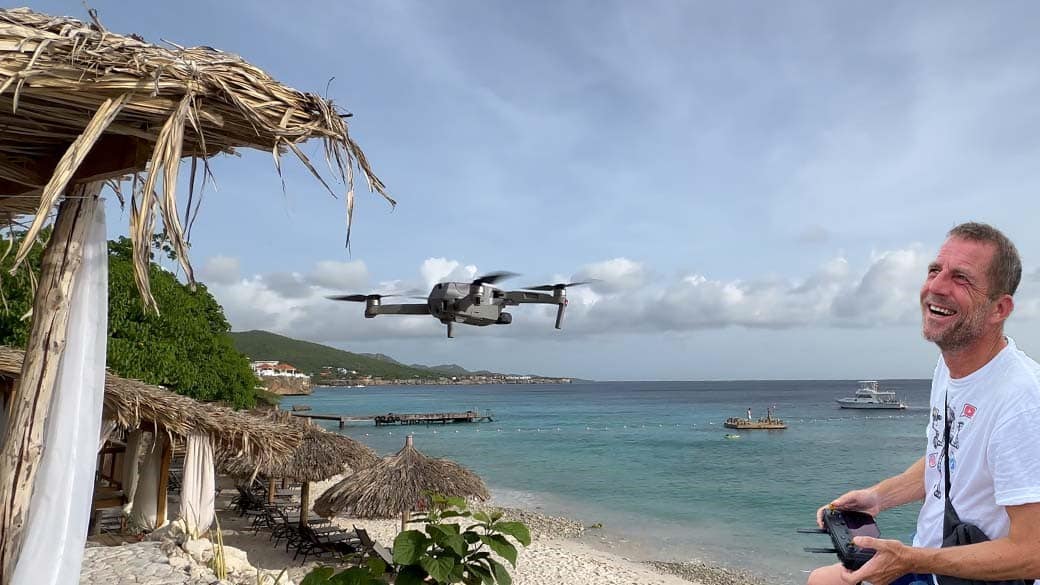Sargassum – the curse of the Caribbean on Curacao
Maike |
| | 27.04.2024 |
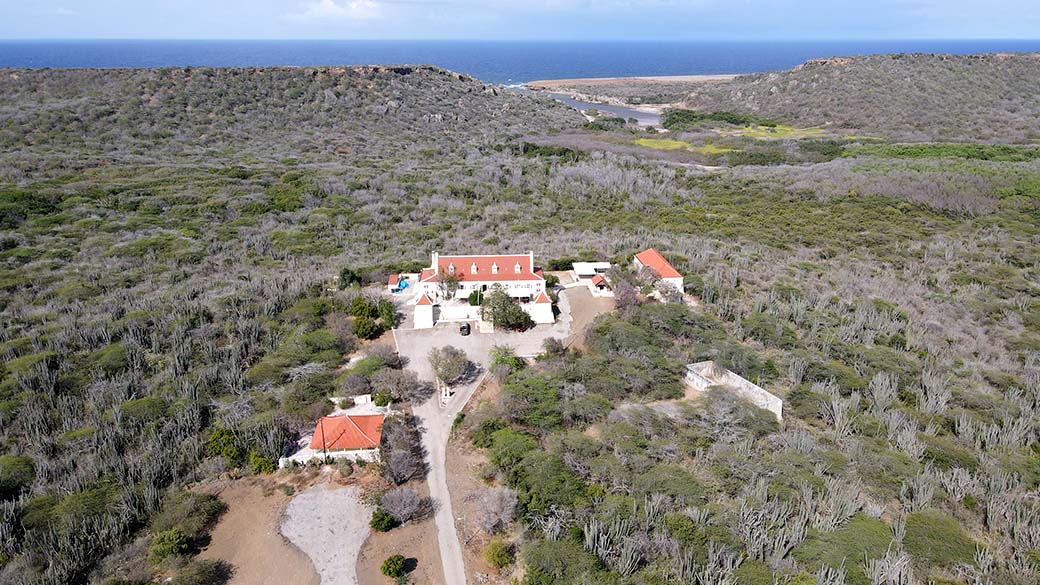
Sargassum
Sargassum is a brown algae that the magazine Spektrum der Wissenschaft described as the “curse of the Caribbean” back in 2018.
Sargassum originally comes from the tropical and subtropical Atlantic. Two of these brown algae species drift without anchoring en masse in the Sargasso Sea and the Gulf of Mexico. Gas-filled bubbles hold the up to one meter long plants at the water surface. When they are held together by different currents in the open sea, they form a valuable habitat.
Countless numbers of marine organisms live in the seaweed: from firmly attached bryozoans and endemic species such as the Sargasso fish to free-swimming sea turtles. Young turtles can hide well in it in the open sea and hunt crabs or gnaw on the Sargassum itself.
Coastal alarm
However, if sargassum washes up on the coast, it forms a compact carpet of death, as has unfortunately been the case for years on the Caribbean coasts. Curacao also has to contend with this time and again. This year, a carpet of brown algae reached the north of Curacao as early as mid-April. The bays of Ascencion and Sint Joris are particularly affected.
The Sea Turtle Conservation Curacao (STCC) has already appealed for help on social media, as sea turtles are getting stuck in the thick pile of seaweed and are unable to dive down or catch their breath.
Consequential damage
The Unique Curacao Foundation (Stichting Uniek Curacao) reports that the Sargassum, which was previously drifting in Ascension Bay, has now sunk to the bottom. In addition, some of it has accumulated in the shallowest parts of the bay.
“The seaweed lying on the bottom and the sea creatures under the sargassum die when it sinks to the bottom.” (Unique Curacao Foundation)
The brown algae release hydrogen sulphide, a poisonous gas whose characteristic smell is reminiscent of rotten eggs. The stench even overpowers the salty smell of the sea. The gas can damage plants and animals alike. In humans, it can cause headaches, drowsiness, nausea and asthma, as well as irritating the eyes and respiratory tract.
The sargassum situation is critical and something urgently needs to be done about it. For this reason, the foundation would like to contact the Ministry of Health, Environment and Nature (GMN). The Ministry is aware of the situation, but will probably wait for the last wave of Sargassum before taking further action.
Sources:
Curacao Chronicle news from 25.04.2024
Spektrum der Wissenschaft report from 18.07.2018
Stichting Uniek Curacao (Unique Curacao Foundation) in the fight against the Sargassum plague
The picture shows the Boka Ascencion in the background without brown algae infestation.
Luft auf ein kleines Quiz? Wir haben 100+ kurzweilige Fragen rund um Curacao zusammengestellt. Viel Spaß beim Rätseln!
Quiz Question
What is a Toko?Answer
A toko is a grocery store on Curacao.
Tokos are usually somewhat smaller than the large supermarkets such as Centrum, Van den Tweel or Mangusa Hypermarket. They are usually privately run and can be found in almost every locality. Sometimes they are quite inconspicuous, somewhat less inviting from the outside and the checkout area is often barred.
However, you can often get food much cheaper in a toko. Some are open longer in the evenings than the big chains.
A very special toko is the Toko Williwood.
Du magst mehr? Hier ist ein Beitrag, der Dich ebenfalls interessieren könnte:
Falls Du diese News interessant findest, teile sie auf Social Media mit Deinen Freunden.
Den Strand, die Sonne und das Meer satt? Hunger? Surf doch mal rüber in unsere Rubrik Restaurants & Bars. Du suchst ein anderes Urlaubsprogramm? Lifestyle und Shopping bieten Dir zahlreiche Anregungen. Entdecke die Natur oder folge einem Geheimtipp (Pssst!). Tipps für ein gelungenes Chillen op de Antillen gibt es unter Relaxed Reisen.
Sargassum – the curse of the Caribbean on Curacao
Maike |
| | 27.04.2024 |

Sargassum
Sargassum is a brown algae that the magazine Spektrum der Wissenschaft described as the “curse of the Caribbean” back in 2018.
Sargassum originally comes from the tropical and subtropical Atlantic. Two of these brown algae species drift without anchoring en masse in the Sargasso Sea and the Gulf of Mexico. Gas-filled bubbles hold the up to one meter long plants at the water surface. When they are held together by different currents in the open sea, they form a valuable habitat.
Countless numbers of marine organisms live in the seaweed: from firmly attached bryozoans and endemic species such as the Sargasso fish to free-swimming sea turtles. Young turtles can hide well in it in the open sea and hunt crabs or gnaw on the Sargassum itself.
Coastal alarm
However, if sargassum washes up on the coast, it forms a compact carpet of death, as has unfortunately been the case for years on the Caribbean coasts. Curacao also has to contend with this time and again. This year, a carpet of brown algae reached the north of Curacao as early as mid-April. The bays of Ascencion and Sint Joris are particularly affected.
The Sea Turtle Conservation Curacao (STCC) has already appealed for help on social media, as sea turtles are getting stuck in the thick pile of seaweed and are unable to dive down or catch their breath.
Consequential damage
The Unique Curacao Foundation (Stichting Uniek Curacao) reports that the Sargassum, which was previously drifting in Ascension Bay, has now sunk to the bottom. In addition, some of it has accumulated in the shallowest parts of the bay.
“The seaweed lying on the bottom and the sea creatures under the sargassum die when it sinks to the bottom.” (Unique Curacao Foundation)
The brown algae release hydrogen sulphide, a poisonous gas whose characteristic smell is reminiscent of rotten eggs. The stench even overpowers the salty smell of the sea. The gas can damage plants and animals alike. In humans, it can cause headaches, drowsiness, nausea and asthma, as well as irritating the eyes and respiratory tract.
The sargassum situation is critical and something urgently needs to be done about it. For this reason, the foundation would like to contact the Ministry of Health, Environment and Nature (GMN). The Ministry is aware of the situation, but will probably wait for the last wave of Sargassum before taking further action.
Sources:
Curacao Chronicle news from 25.04.2024
Spektrum der Wissenschaft report from 18.07.2018
Stichting Uniek Curacao (Unique Curacao Foundation) in the fight against the Sargassum plague
The picture shows the Boka Ascencion in the background without brown algae infestation.
Beiträge, die Dich interessieren könnten:
Falls Du diese News interessant findest, teile sie auf Social Media mit Deinen Freunden.
Vorschläge aus unseren anderen Rubriken, die Dich interessieren könnten:
Quiz Question
What is a Toko?Answer
A toko is a grocery store on Curacao.
Tokos are usually somewhat smaller than the large supermarkets such as Centrum, Van den Tweel or Mangusa Hypermarket. They are usually privately run and can be found in almost every locality. Sometimes they are quite inconspicuous, somewhat less inviting from the outside and the checkout area is often barred.
However, you can often get food much cheaper in a toko. Some are open longer in the evenings than the big chains.
A very special toko is the Toko Williwood.
#immerdabei - unsere Artikel zum mitnehmen auf einer Map - probier's aus!
Sargassum – the curse of the Caribbean on Curacao
Maike |
| | 27.04.2024 |

Sargassum
Sargassum is a brown algae that the magazine Spektrum der Wissenschaft described as the “curse of the Caribbean” back in 2018.
Sargassum originally comes from the tropical and subtropical Atlantic. Two of these brown algae species drift without anchoring en masse in the Sargasso Sea and the Gulf of Mexico. Gas-filled bubbles hold the up to one meter long plants at the water surface. When they are held together by different currents in the open sea, they form a valuable habitat.
Countless numbers of marine organisms live in the seaweed: from firmly attached bryozoans and endemic species such as the Sargasso fish to free-swimming sea turtles. Young turtles can hide well in it in the open sea and hunt crabs or gnaw on the Sargassum itself.
Coastal alarm
However, if sargassum washes up on the coast, it forms a compact carpet of death, as has unfortunately been the case for years on the Caribbean coasts. Curacao also has to contend with this time and again. This year, a carpet of brown algae reached the north of Curacao as early as mid-April. The bays of Ascencion and Sint Joris are particularly affected.
The Sea Turtle Conservation Curacao (STCC) has already appealed for help on social media, as sea turtles are getting stuck in the thick pile of seaweed and are unable to dive down or catch their breath.
Consequential damage
The Unique Curacao Foundation (Stichting Uniek Curacao) reports that the Sargassum, which was previously drifting in Ascension Bay, has now sunk to the bottom. In addition, some of it has accumulated in the shallowest parts of the bay.
“The seaweed lying on the bottom and the sea creatures under the sargassum die when it sinks to the bottom.” (Unique Curacao Foundation)
The brown algae release hydrogen sulphide, a poisonous gas whose characteristic smell is reminiscent of rotten eggs. The stench even overpowers the salty smell of the sea. The gas can damage plants and animals alike. In humans, it can cause headaches, drowsiness, nausea and asthma, as well as irritating the eyes and respiratory tract.
The sargassum situation is critical and something urgently needs to be done about it. For this reason, the foundation would like to contact the Ministry of Health, Environment and Nature (GMN). The Ministry is aware of the situation, but will probably wait for the last wave of Sargassum before taking further action.
Sources:
Curacao Chronicle news from 25.04.2024
Spektrum der Wissenschaft report from 18.07.2018
Stichting Uniek Curacao (Unique Curacao Foundation) in the fight against the Sargassum plague
The picture shows the Boka Ascencion in the background without brown algae infestation.
Beiträge, die Dich interessieren könnten:
Falls Du diese News interessant findest, teile sie auf Social Media mit Deinen Freunden.
Quiz Question
What is a Toko?Answer
A toko is a grocery store on Curacao.
Tokos are usually somewhat smaller than the large supermarkets such as Centrum, Van den Tweel or Mangusa Hypermarket. They are usually privately run and can be found in almost every locality. Sometimes they are quite inconspicuous, somewhat less inviting from the outside and the checkout area is often barred.
However, you can often get food much cheaper in a toko. Some are open longer in the evenings than the big chains.
A very special toko is the Toko Williwood.
#immerdabei - unsere Artikel zum mitnehmen auf einer Map - probier's aus!


